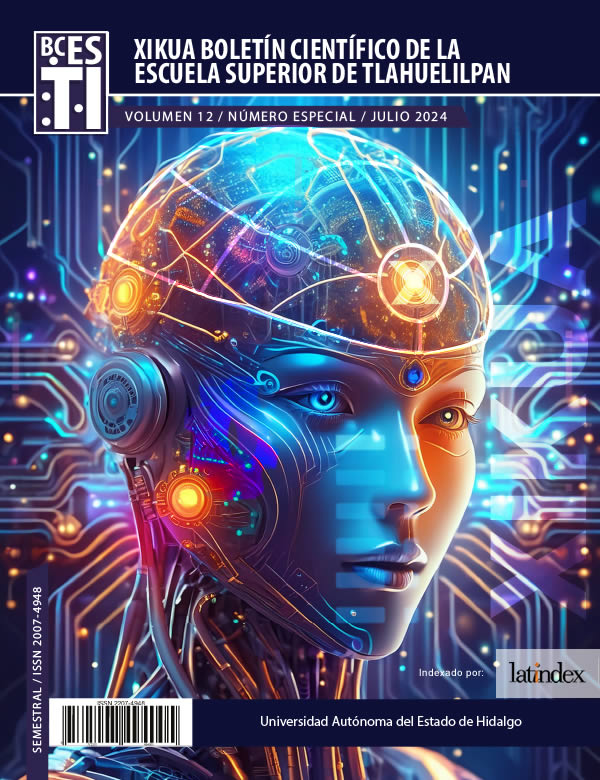Human Identification through Artificial Intelligence: Using Unsupervised Learning
Abstract
In Mexico there are thousands of disappeared people. If a person does not appear after 24 or 72 hours, they are reported to the authorities. The authorities request information such as their name, age, gender, clothing, and physical features, as well as a photograph. The authority issues a publication to start the search. The problem arises when after several weeks or months the person does not appear. On the other hand, the authorities find dead people without identification. The authorities generate an identification card and protect the body until their family members are found. When relatives do not appear, the body is buried in a common grave. In this work, the aim is to identify people without identification. For the above, a Physical Characteristics Profile is used. Features range from moles, scars, tattoos, accessories, clothing, and others. 156 images of people were collected from Pinterest. A matrix with 257 characteristics was used for each person. It is intended that the Authorities also generate the Characteristics Profile. With the Orange application, similarities were sought in the characteristic profiles. Using unsupervised learning, the cluster where the person without identification is grouped is searched. In this work, the method was tested with two cases. The results show that a cluster was generated with two elements for each case. It is concluded that the method and tools used have managed to find the wanted people
Downloads
References
J. Demsar, T. Curk, A. Erjavec, C. Gorup, M. Milutinovic, M. Mozina, M. Polajnar, M. Toplak, A. Staric, M. Stajdohar, L. Umek, L. Zagar, J. Zbontar, M. Zitnik y B. Zupan, Orange: Data Mining Toolbox in Python, Journal of machine learning Research, vol. 14, pp. 2349-2353 (2013)
R.-E. Pedroza M.: Diseño e implementación de un sistema de biometría facial para la búsqueda de personas desaparecidas en Colombia, Universidad de Cartagena, Cartagena, Colombia (2019)
C.-R. Pedroza: Investigación antropológica forense y memoria en la búsqueda de personas desaparecidas en contextos de violaciones de derechos humanos en el Perú, Memorias, nº 1, pp. 69-85 (2017)
P. Sferrazza: La búsqueda de personas desparecidas en chile: ¿Necesidad de un complemento humanitario? Revista Mexicana de Ciencias Políticas y Sociales, nº 243, pp. 79-108 (2021)
Z. Jindan y A.-M. Mohamed: A content- based system for human identification based on bitewing dental X-ray images, Pattern Recognition, nº 38, pp. 2132-2142 (2005)
N. Kaushal y P. Kaushal: Human identification and fingerprints: a Review, Journal of biometrics and biostatistics, vol. 2, nº 4, pp. 2-4 (2011)
Z. Kaiwei, N. Munan, W. Yaohua y G. Yang: Hierarchical clustering with hard-batch triplet loss for person re-identification, 2020 IEEE/CVF Conference on Computer Vision and Pattern Recognition (CVPR), pp. 13654-13662 (2020)
K. Sinaga y M.-S. Yang: Unsupervised k-means clustering algorithm, IEEE Access, vol. 8, pp. 80716-80727 (2020)
R.-J. Rimachi-Costillas: Detección de patrones de personas desaparecidas mediante técnicas de aprendizaje no supervisado, Cusco, Perú: Universidad Andina del Cusco (2022)
A. L. Ruiz Rizzo y J. González Veloza: Factores de predicción de la aparición de personas mayores reportadas como desaparecidas, a partir de modelos de aprendizaje automático supervisado, Bogotá, Colombia: Universidad Los libertadores (2021)
G. Jing: Clustering Lecture 3: Hierarchical Methods. Obtenido de: https://cse.buffalo.edu/~jing/cse601/fa12/materials/clustering_hierarchical.pdf
Copyright (c) 2024 Edmundo Daniel Bonne Montero, José Sergio Ruiz Castilla, Brenda-Stephnanie Martínez-Medina

This work is licensed under a Creative Commons Attribution-NonCommercial-NoDerivatives 4.0 International License.








